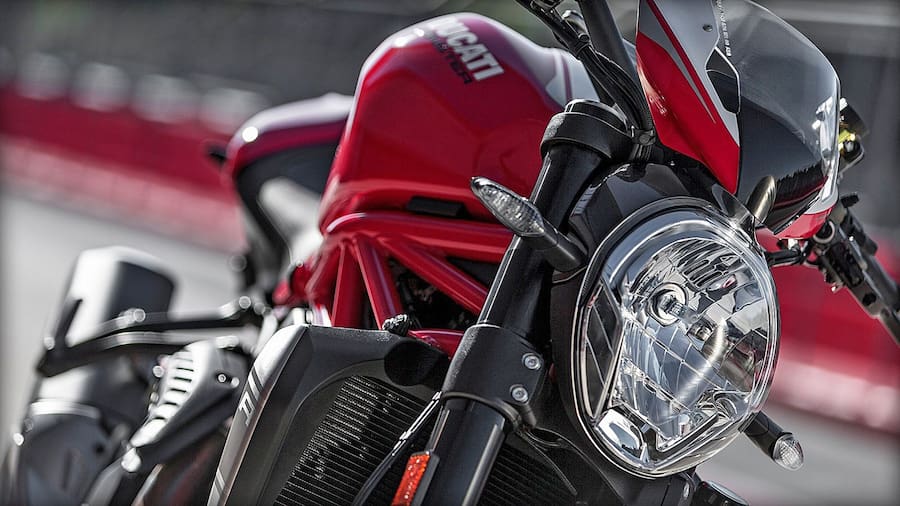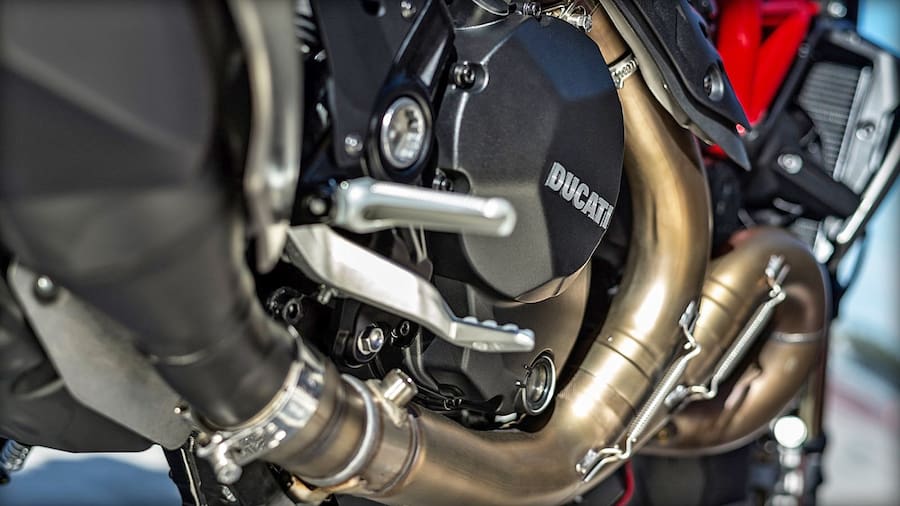For more than 20 years the Monster has been a mainstay of the Ducati model line-up, and for 2017 the Bolognese designers went back to the future to deliver a machine that more closely reflects the original that debuted in 1992.
Retaining that edgy, distinctive look from when it first appeared at the Cologne motor show, the whole Monster family has achieved a level of refinement and longevity most manufacturers can only dream of.
I rode my first Monster about a decade ago, back when it was one of the cheapest ways to own a Ducati. I was sceptical, and figured if it was cheap it probably wasn’t any good, and the bike was most likely overhyped anyway.
What a mistake! I was instantly hooked and over the years I’d rate the various Monsters I have owned and tested among my most satisfying two-wheeled experiences. The shape of that fuel tank, the trellis frame, the finely crafted single-sided swingarm, not to mention a riding position that seems to lend itself to any style of riding… it all adds up to motorcycling heaven.
However, my love of Monsters past doesn’t mean the 2017 Monster got a free pass to a positive review – if anything it made my expectations higher.
Reading the specs sheet, it’s interesting to note that the Testastretta 11° DS engine makes 3kW more power than last year’s S model. Around the street, though, it’s the character and torque of this engine that stands out. It’s a pleasure to punch through traffic, with excellent acceleration and natural feel on the ride-by-wire throttle.
The 1299 Panigale-inspired electronics package feels well developed as a whole and is similar to the system on Ducati’s other models. There are three riding modes available: Sport, Touring and Urban. In Sport mode, the punch through traffic feels like a thunderous right cross, delivering the full 110kW impact to the senses. It’s my happy place… but Ducati makes it easy to dial things back if needed, and Touring mode is useful around the street or when the traffic gets really heavy.
The minimalist styling has a practical application – lane filtering is a breeze and tight spots can be navigated without issue due to the bike’s low centre of gravity.

Heading into the mountains to let the 1200 stretch its legs, it’s very difficult to fault with tall gearing and seemingly endless torque.
In making the new bike feel more like the original, the designers also changed the geometry to increase rake, reduce the trail and shorten the wheelbase. This results in sharper handling and, when combined with the fat Kayaba fork and Sachs rear shock, it makes twisty sections pure pleasure.
There’s also an S model, but is it worth an extra few grand? Speaking very generally, I would say Ducati has upped the performance of the stock suspension considerably over the last decade or so. The once night-and-day difference between the standard bike and the 2017 S is harder to tell now. An aftermarket exhaust, however, is still a must, even though the note from the standard model is still pretty damn nice from the wide 50mm exhaust sections.

The colour TFT display is easy to read, with excellent contrast, even in the harsh lighting conditions of the mountains.
The whole package is topped off with a very natural seating position – a Monster hallmark – that makes operating the controls very intuitive. My only reservation about the bike was the styling of the headlight and its surrounds.
When Miguel Angel Galluzzi created the original ‘Il Mostro’ all those years ago, he could never have predicted the success the model would achieve. Today it still accounts for a significant chunk of Ducati’s worldwide sales, and as long as we keep seeing the model evolve like it has in 2017 it will be around for many years to come.

Pros
- Superb all-rounder
- Sweet handling
- Engine response/power delivery
Cons
- Benefits from an aftermarket pipe
- Headlight styling
Test: Matt O’Connell
Photography: Angi Kim















